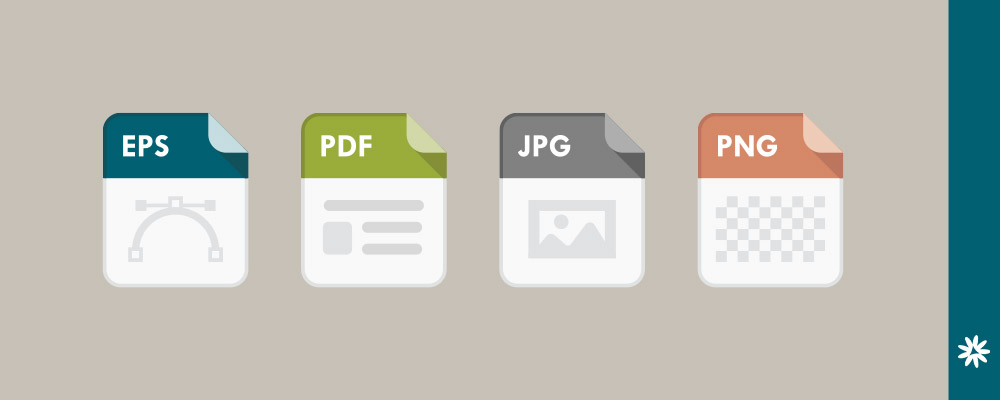Before breaking down file formats, it’s important to understand some of the terminology regarding image files. First, there are two main image file types: raster and vector.
Raster graphics are made up of individual pixels that collectively compose an image. Scalability is limited in raster files, which means that, as you increase the image size, the individual pixels in the image become more prominent and pixelated.
Vector graphics, on the other hand, are scaleable. They are based on mathematical calculations and parameters which allows the image to be scaled to any size.
Generally, vector format is ideal when working with logos, print materials, or anything that may need to be scaled. Raster files are usually used online since resolution requirements are lower.
Transparency is another key element in file formats. Only some image files support transparency (specifically transparent backgrounds). Transparency allows images and logos to be placed on background colors other than white.
With these distinctions in mind, here are some of the most common file extensions for each image type.
Raster Images
JPG or JPEG
JPG (Joint Photographic Experts Group) is a lossy graphics file, meaning that it removes pixels and loses quality every time the file is decompressed/recompressed. JPGs do not support transparency.
JPGs are best used for photographs and web images.
PNG
Unlike JPGs, PNG (Portable Network Graphics) files can handle detailed, high-contrast images because there is no loss in quality each time the file is opened and resaved. Furthermore, PNGs support transparency! This is especially useful for web projects which require a logo without a background.
PNGs are best for web and digital use.
GIF
Similar to JPGs and PNGs, the GIF (Graphics Interchange Formats) can be used to make still images. GIF files also can create animate images. They can hold multiple pictures at once, then these are loaded sequentially and run through in “flip book” style.
GIFs are best used for web purposes and in creating animated graphics.
TIFF
TIFFs (Tagged Image File Format) offers lossless compression, similar to PNGs, and is meant to preserve image quality. TIFFs also support layers, transparency, and are directly editable in Photoshop.
TIFFs are best used for photography (not so much for web use, as they often slow down page-load speed).
Vector Images
PDF
PDFs (Portable Document Format) are one of the most common ways to transfer logos in vector format. PDFs were specifically built for exchanging documents across platforms and, if they haven’t been flattened, are editable with Adobe products.
Flattened PDFs look the same as PDFs that are still editable, but they are no longer able to be edited and cannot be altered. This simplifies the PDF and often makes it a smaller file size which is faster to render. Their disadvantage though, is that once they are flattened, it is difficult to extract or change any of the PDF’s data.
The great thing about PDFs is that everyone can view them (regardless of the operating system in use), whereas other vector formats require a specific software.
PDFs are vector format (if not flattened), support transparency, and can be used for both print and digital applications.
EPS
EPS (Encapsulated PostScript) files are vector-based graphics that are created using Adobe Illustrator. EPS files are transparent, scaleable and editable.
EPS files are primarily used for print purposes and are best especially for logos and high resolution files.
AI
AI (Adobe Illustrator Artwork) is a propriety file format created by Adobe. Like EPS, AI files are transparent, scaleable and editable. This file type is primarily used by designers as it can only be viewed on Adobe software.
AI is best used for logos and print.
Make Sure You Have This File Format!
When your graphic designer creates your logo, make sure you have the EPS or AI files. This gives you the highest level version of your logo so you may provide it to others who made need it, such as promo item vendors or other graphic designers. Although you may not be able to open this file, make sure you keep this file type of your logo!

